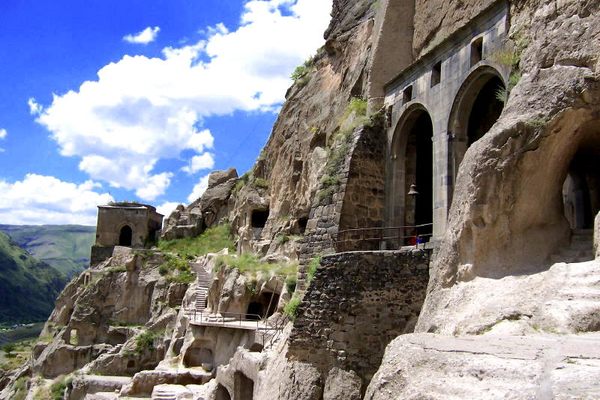
The Stark Beauty of Tushetian Shepherds’ Journey Across Georgia’s Caucasus Mountains
These stunning photographs reveal the determination and resilience of a centuries-old way of life.
As spring begins to melt the snow in the mountains of northeastern Georgia, shepherds drive thousands of sheep across a perilous mountain pass to the stunning meadows of the Tusheti highlands. The meadows of the Tusheti have been called the last wild place in Europe and make for ideal summer grazing for the hardy, local sheep of the region—but the steep path is full of dangers, dangers that can sometimes prove fatal.
Herding livestock to seasonal grazing grounds, a practice known as transhumance, is nothing new. Evidence of such journeys stretches back 10,000 years to when animals were first domesticated. The Tusheti shepherds of Georgia have moved their herds between seasonal pastures for at least half a millennium.
Nestled in the Caucasus Mountains, the grassy fields of the Tusheti make ideal summer pastures for the hardy local sheep. Between June and September, the animals munch on high-protein grasses such as alpine bluegrass and toothed bellflower, giving the cheese made from the sheep’s prized milk its unique, strong flavor. In 2019, the gourmet cheese, known as Tushetian or Tushuri guda after the sheepskin, or guda, used in curing, earned a coveted appellation of origin, which verifies that cheese from the region is the real deal.
In spring 2022, the Philippe Brothers, a documentary team made up of brothers François, Stéphane, and Michael Philippe, followed along as one group of shepherds made their way up the dangerous trail to the Tusheti. Shepherds are usually related, and the group of four shepherds they followed were all kin and grew up surrounded by the stunning mountain vistas of the region. In 2022, the four shepherds (who preferred not to share their names) set out on their annual trek with 1,200 sheep and eight herding dogs.

“The scenery was epic but ruthless,” says Michael Philippe. “It was not a place to live in, yet we walked there for two days with them, alone in pure wilderness.” Days started early with the group easily covering more than 30 miles in a day. Food was basic, says Philippe. A quick lunch might consist of bread, a can of food, like stewed fish, and “lots of alcohol.” Often the shepherds downed shots of chacha, a strong, Georgian liquor made from the leftovers of wine production. At night, they bundled up in their jackets and slept outside on the cold mountainside.
Along the way, the group had to cross several raging, freezing rivers—Philippe sometimes opted to take off his shoes and carry them. Wet shoes were worse than freezing feet. But by far the riskiest stretch of the journey was the Abano Pass, says Philippe. The unpaved, 43-mile stretch of road weaves across the Caucasus Mountains at an elevation of almost 10,000 feet. The unpredictable spring weather can cause sudden snow storms, rock slides, and dense fog. Snowmelt from the mountains destroys portions of the pass every year. “All the journey was difficult but the pass was the worst,” says Philippe. “We could [have] died many times because of the state of the road, falling rocks.”
Once the shepherds made it to the Tusheti mountain valleys, they settled back into familiar rhythms—milking and tending to the sheep by day and then gathering around the fire to share songs and stories by night. Tusheti villages, abandoned for most of the year, come back to life in summer as entire communities return to their mountain homes.
Despite climate change and natural disasters threatening their way of life, every year shepherds continue to make the difficult journey to and from the mountains. The Philippe brothers took these images of the transhumance, revealing the shepherds’ determination and triumph in completing the dangerous journey for yet another year.






































Follow us on Twitter to get the latest on the world's hidden wonders.
Like us on Facebook to get the latest on the world's hidden wonders.
Follow us on Twitter Like us on Facebook